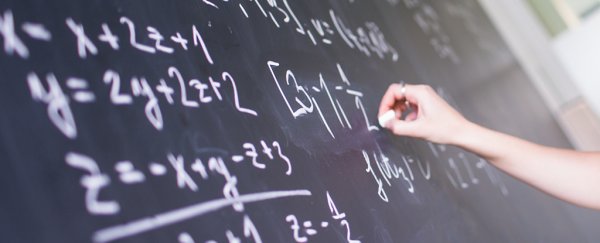Visually impaired people might be able to 'repurpose' the visual cortex part of their brain to help make mathematical calculations, a small study has shown. The finding has come as a surprise, because the visual cortex is typically used to process everything the eyes are seeing.
The research also revealed that similar brain patterns can be found in both blind and fully sighted individuals when they solve maths problems, suggesting that 'visualising' a sum doesn't necessarily depend on past visual experiences.
"The visual cortex is this ancient structure that's always processed vision, you would think that could never change," one of the research team, Shipra Kanjlia, from Johns Hopkins University, told Colin Barras at New Scientist. "But then you find it does."
The researchers fixed fMRI scanners on 36 volunteers, 17 of whom had been blind from birth. During the scans, the participants were tasked with performing simple arithmetic in their heads (the sighted participants wore blindfolds for the duration of the test).
When the team compared the results, scans showed similar activity in the intraparietal sulcus region of the brain for both the blind and sighted participants. The intraparietal sulcus is a part of the brain that's widely thought to be involved in processing numbers.
"It's really surprising," Kanjlia told New Scientist. "It turns out brain activity is remarkably similar, at least in terms of classic number processing."
But that wasn't the only thing the scans revealed.
In the congenitally blind participants, the visual cortex was active during the arithmetic, and the harder the questions were, the greater the level of visual cortex activity. Strangely enough, this was not the case for the sighted group.
"The number network develops totally independently of visual experience," Kanjlia said in a press statement. "These blind people have never seen anything in their lives, but they have the same number network as people who can see."
At this stage, the researchers can't explain why this is possible, but think it could be down to the brain making use of parts of the organ that aren't otherwise busy, due to the inherent plasticity of the visual cortex.
And the brain's flexibility in this regard could mean that it can repurpose itself to take on board all sorts of other cerebral tasks.
"If we can make the visual cortex do math, in principle, we can make any part of the brain do anything," said one of the team, Marina Bedny.
While this only a very small study, it's not the first time that scientists have found the brains of blind people rewiring themselves to perform new jobs. A 2010 study showed that the visual parts of the brain could also be repurposed to enhance touch and hearing.
The researchers behind that study, from Georgetown University Medical Centre, said the brain had showed itself to be plastic enough to adapt to different sensory inputs and handle them in the same way visual information is handled.
And last year, another study from Johns Hopkins University found blind children making use of the visual cortex – this time to process speech. It was as if the visual cortex was being 'colonised' for different functions, according to the researchers.
"In some circumstances, patches of cortex appear to take on other roles than the ones that they most typically have," said neuroscientist Rebecca Saxe at the time.
All of which begs the question: just how flexible are the cortices in our brains, and what are the limits of the new abilities they can learn?
We can't wait to see where this research leads.
The study has been published in PNAS.
